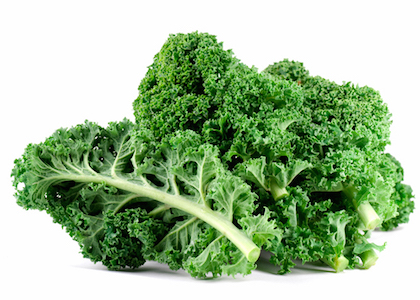
Killer Kale? We Don’t Think So
By Stacy Kennedy, MPH, RD, CSO, LDN; Reboot Nutritionist
Kale has been under the microscope of public opinion in recent weeks, with questions about its consumption in large quantities. Thanks to a recent story that broke in Mother Jones, consuming kale has been blamed for causing heavy metal toxicity, specifically thallium. Thallium poisoning is serious. Undiagnosed and untreated it can lead to long-term neurological issues like memory impairment, anxiety, depression and issues with intelligence.
But before you spit out your green juice, let’s take a closer look at the concerns. I always feel that broad generalizations are suspect when it comes to nutrition. The catchier the headline, the more digging I want to do. Ever play the game two truths and a lie? I like to use that approach with nutrition hyperbole to help sort out fact from fiction.
Truth: Vegetables in the green cabbage family, including kale, can accumulate toxic metals in their leaves.
But did you know that these veggies also have enzymes and other phytonutrient compounds to detoxify metals? The actual amount of potential compounds of concern, like thallium, depends on the concentration of the element in the soil itself, the soil’s water content, its pH, and other organic material in the soil, among other factors.
Truth: Overconsumption of one type of food may lead to problems in certain individuals.
This is one reason nutrition experts recommend getting a wide variety or rainbow of colorful fruits and veggies. Only consuming one type of green (or any food for that matter) in certain individuals with specific risk factors, may lead to excessive amounts of a nutrient that could be problematic.
The best way to avoid these potential concerns is to enjoy a wide variety of vegetable, rather than focusing on just one or two continually.
Lie: All kale contains toxic levels of heavy metals.
Kale and other cabbage family vegetables grown in contaminated soil can absorb toxic metals like thallium—but only if thallium is present in the soil, which isn’t a given. Older leaves compared to fresh leaves will have a greater accumulation.
Research has shown that areas in rural China and Iran indeed may be a risky place to get your veggies from. That’s all the more reason to eat locally, in season, visit farmer’s markets and grow your own produce as much as possible.
The bottom line on killer kale?
Not all kale has toxic levels of heavy metals, like thallium. If you purchase your leafy cabbage-family veggies from local sources where the water and soil is not contaminated, your risk of damaging exposure is greatly reduced, especially if you rotate or vary the type of greens and other vegetables you juice and eat.
As we love to say at Reboot with Joe, “eat the rainbow.” (Check out our Eat the Rainbow infographic.)